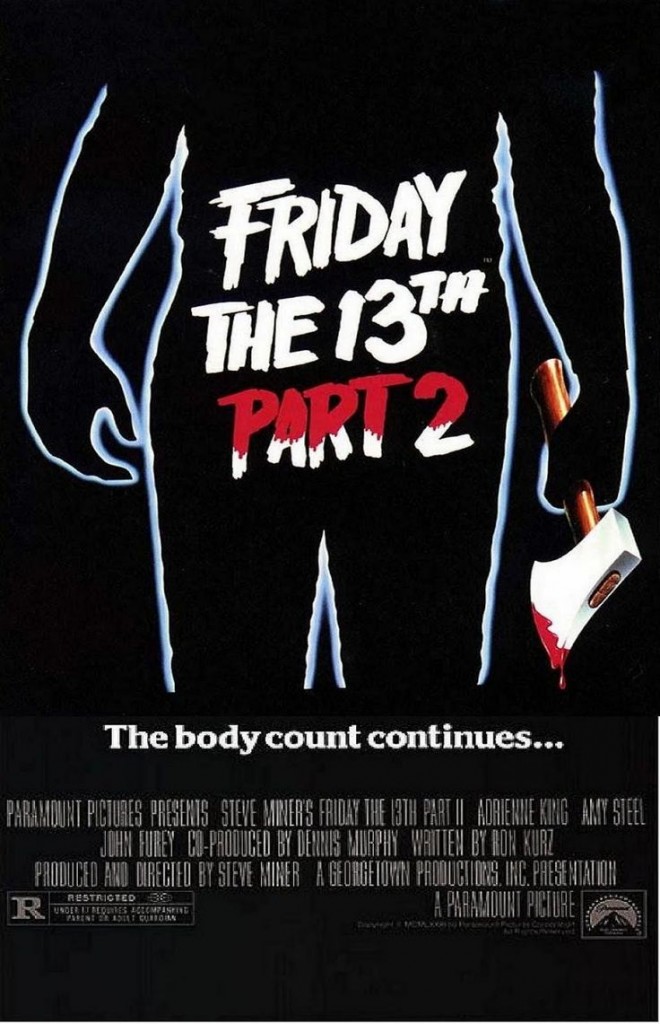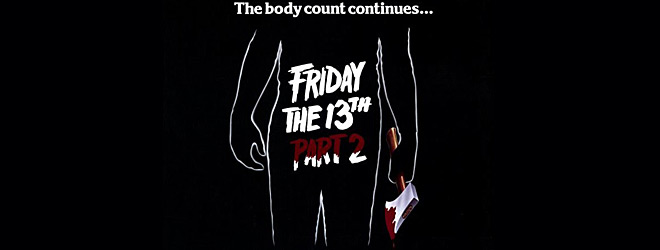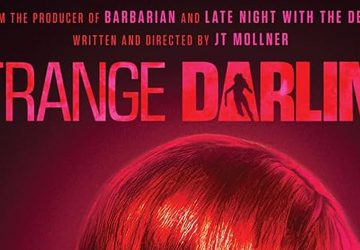On May 1st of 1981, Paramount Pictures delivered their sequel to the major success Horror film Friday the 13th. Coming a year after the original film’s release, the follow-up project grossed one million dollars more than its predecessor opening weekend, and sparked the true identity of a Slasher icon still recognized today. Although, Friday the 13th Part 2, despite its success, was not without its bumps in the road, but is still considered one of the most important movies in Horror history as it celebrated its 35th anniversary.

Directed by Steve Miner, who had worked with Sean S. Cunningham in the past on the original Friday the 13th, as well as 1972’s The Last House on the Left, the continued story had strong ties to the original production. The new chapter of Jason Voorhees takes place five years after the original, Adrienne King returned as Alice, the sole survivor who beheaded Mrs Voorhees (Betsy Palmer: Knots Landing TV series, Friday the 13th 1980) and is last seen being dragged into the water by a young Jason (Ari Lehman: Bite School 2015, Friday the 13th 1980). She is still tortured by the horrific experience with nightmares. Currently living alone, a phone call from her mother reveals that she has not gone out much. After all this time, her suffering comes to a brief and unfortunate end.
Camp Crystal Lake now closed, the camp right across the way reopens as a counselor training center. Run by Paul (John Furey: Days of Our Lives TV series, Queer as Folk TV series) and Ginny (Amy Steel: April Fool’s Day 1986, For Love and Honor TV series), they retell the now infamous story of the murders by Mrs Voorhees as revenge for her son Jason, thought to be dead until Alice’s murder. Trying to move past the disturbing incident, the main sheriff of the small town asks that the murder scene remains off limits. This, of course, can be all too tempting for a couple of young and adventurous teenagers, a curious move which eventually turns fatal.
Barely two nights in, a majority of the group head out across town for some drinks. The few who stay behind plan on some fun of their own, but are unfortunately murdered one by one, each kill more gruesome than the last. Leaving the bar scene early, Ginny and Paul return to an eerily deserted camp. They are quickly attacked, the killer’s identity hidden behind a pillowcase.
When Paul is knocked out, Ginny is forced to run, the killer only a few feet behind her. Her blind chase leads her to a small shack in the middle of the woods, where she finds a shrine to Mrs Voorhees, her head placed as the centerpiece.
Now knowing the identity of the said killer, she attempts to confuse him by pretending to be his late mother. Coaxing him to move closer for a sneak attack, he quickly realizes her plan, and she would become the next victim if Paul did not arrive in the nick of time. Finally able to relax, they foolishly let their guard down, as the horror can always sneak up on you.
In today’s world, it is difficult for any Horror fan to imagine the genre without Jason Voorhees. However, back in 1980, it was hard for a select few to accept the character as a continuance to the original story. As a result, Cunningham and writer Victor Miller, as well as accomplished makeup artist Tom Savini, walked away from the project, leaving Miner to take over as director. They could not comprehend the details involving Jason in the story, but Paramount and Miner were determined. Despite the drama, Cunningham did eventually return to assist good friend Miner with casting and pre-production.
Having a bigger budget, the film was shot more professionally than the first. The cinematography was done by Peter Stein, who experimented with different angles and longer shots. Throughout the film, there were traits that were similar to previous Horror movies, such as 1978’s Halloween and 1974’s Black Christmas, but still had the originality to stand on its own, especially with the slow motion end scene. Amy Steel found that particular scene difficult to shoot, as she was genuinely frightened, an element that gave it more authenticity.

For the opening scene, writers did not bother with a script for Adrienne King, as her screen time was so short. The little dialogue that she had was improvised, which she pulled off flawlessly. After this movie, King was unfortunately deterred from acting for many years due to an obsessed fan that stalked her, and even broke into her apartment.
The closing credits scene with the zoom in on Mrs Voorhees’ head was originally supposed to open her eyes and smile. Miner decided against it, feeling it appeared too hokey and silly. In retrospect, that ending was more suited twenty-two years later for Freddy vs Jason (2003).
As for the now beloved main character, a few people participated in bringing him to life. Warrington Gillette (Time Walker 1982), who originally auditioned for the role of head counselor Paul, portrayed the unmasked version bursting through the window. Enduring seven hours of makeup, he had to perform the stunt with one eye taped shut, which took about three takes. The other remaining footage was performed by Steve Dash (Alone in the Dark 1982, Mr. Hush 2010), who unfortunately did not receive proper credit at the time. To avoid extensive hours of makeup, Dash wore a pillowcase to conceal himself, a suggestion by the costume designer, figuring it was an item most easily obtained by Jason. Despite being the killer, Dash himself suffered from his own stunts, heading to the hospital for broken ribs, and again to get stitches on a finger he almost lost in the fight scene with Amy Steel. Needless to say, crediting Dash as the “understudy” is an unfortunate mishap to a role that shaped a Horror icon.

Thirty-five years later, Friday the 13th Part 2 remains to be a pivotal point in the series, igniting the path for ten more movies, as well as video games, Comics, and much more merchandise. Although the story of Jason was not favored in the beginning, the film still had basic elements to make it a great Slasher flick. With that said, the hockey mask and machete will always hold its value of representation, but its origin should never be forgotten.






No comment